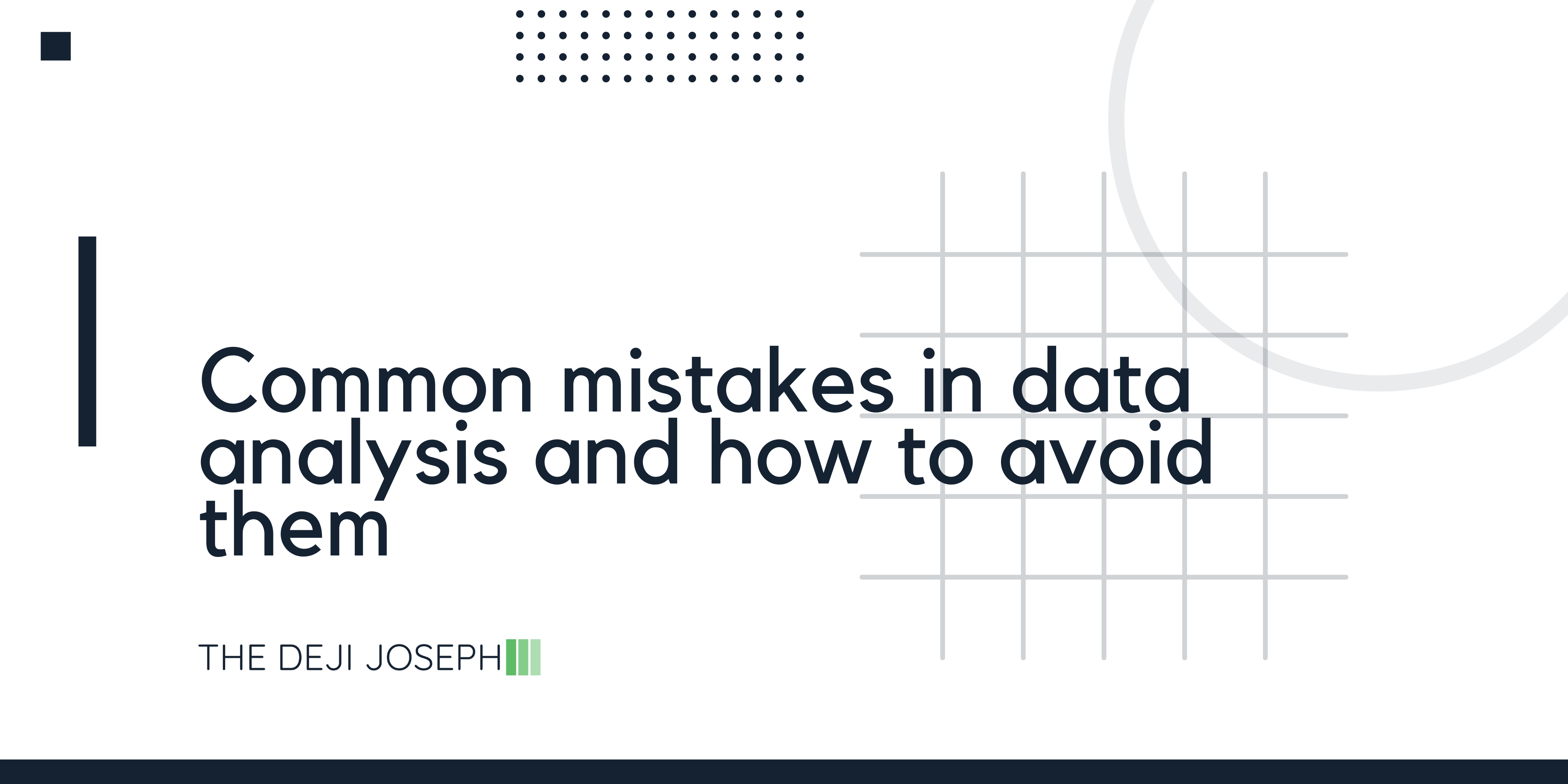Common mistakes in Data Analysis and how to avoid them
 Deji
Deji
Data analysis can be overwhelming, especially for beginners. Even experts can make mistakes that lead to incorrect insights and bad decisions. To avoid these mistakes, it's important to be aware of the common pitfalls in data analysis. In this blog post, we'll explore the top 5 blunders to avoid in data analysis from a beginner's perspective.
Firstly, relying on incomplete data can lead to biased conclusions that result in expensive mistakes. Make sure you have a complete and representative dataset to avoid this mistake.
Secondly, ignoring outliers can lead to incorrect conclusions. Identify and analyze outliers separately from the rest of the data to avoid this mistake.
Thirdly, overlooking data distribution can also lead to incorrect conclusions. Examine the distribution of the data before analysis to avoid this mistake.
Fourthly, failing to check for confounding variables is a common mistake that can lead to spurious conclusions. Examine the relationships between all variables in the dataset to avoid this mistake.
Lastly, overcomplicating the model can lead to overfitting, which occurs when the model fits the noise in the data rather than the signal. Use the simplest model appropriate for the data and assess the model's performance on new data to avoid this mistake.
By being aware of these common mistakes and taking steps to avoid them, you can ensure that your data analysis conclusions are accurate and reliable.
There are more details on my personal blog here.
Subscribe to my newsletter
Read articles from Deji directly inside your inbox. Subscribe to the newsletter, and don't miss out.
Written by

Deji
Deji
I create magic with data